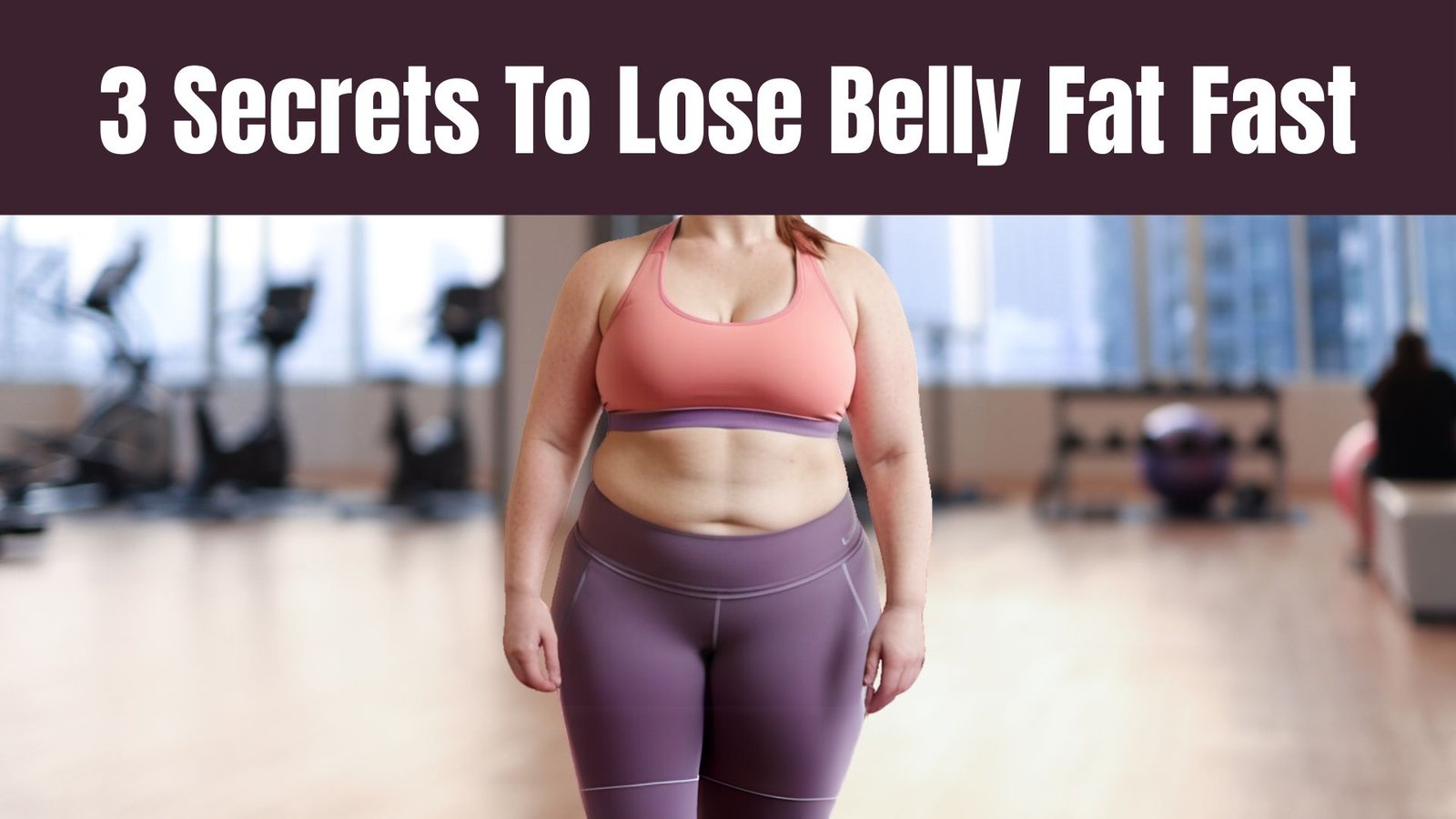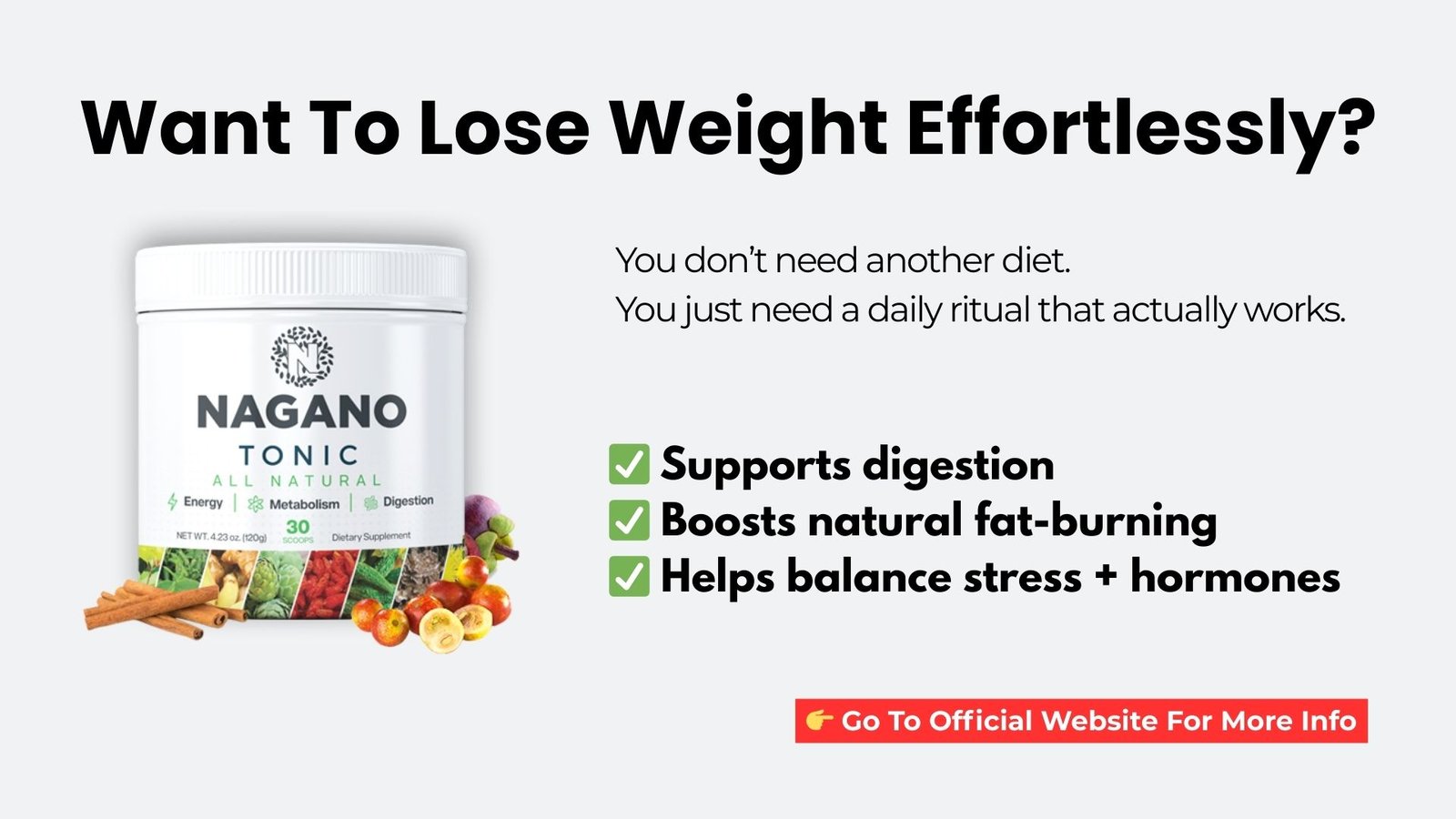Are you frustrated with slow progress on your fat loss journey—despite your best efforts? You’ve cut carbs, tried fasting, and maybe even hit the gym hard… but the stubborn fat just won’t budge. If that sounds familiar, this article is going to change everything for you.
Let’s face it—losing fat isn’t always as simple as “eat less, move more.” In fact, many people unknowingly sabotage their progress by following outdated or incomplete advice.
That’s why today, we’re diving into 7 surprising, science-backed strategies to speed up fat burning—even if you’ve hit a plateau or feel like your metabolism is fighting against you.
These aren’t your typical weight loss tips. Some may even go against what you’ve heard before. But when applied correctly, they can shift your body into a fat-burning machine—and help you stay there.
In this post, you’ll learn:
- Why your body struggles to stay in fat-burning mode
- How to know when you’re truly fat adapted
- The most overlooked habits that actually accelerate fat burning
- And what to do starting today to speed up fat burning safely and naturally
Let’s get started.

Table of Contents
ToggleWhy Fat Burning Feels So Hard
Before we jump into the solutions, let’s acknowledge the real issue. Most people aren’t really burning fat—even if they think they are. Why? Because their bodies are still relying on glucose (sugar) for fuel.
When you’re dependent on sugar, your energy rises and crashes, your cravings never go away, and despite eating less or working out harder, your body stubbornly holds onto fat.
To speed up fat burning, you must transition from being a sugar-burner to a fat-burner. And that process—called “fat adaptation”—is what unlocks consistent energy, suppressed appetite, better mood, and true fat loss.
But it doesn’t happen overnight. It takes 1 to 3 months of metabolic retraining. The good news? You can fast-track that process with the right strategies.
Tip #1. Exercise Less, but Smarter
Here’s something that might blow your mind: Exercising more could actually be the reason you’re not losing fat.
We’ve all been told that burning fat means logging more hours at the gym, sweating it out on the treadmill, or grinding through daily workouts. But what if that advice is actually holding you back?
The truth is, your body doesn’t burn fat during workouts—it burns fat after workouts, during the recovery period. And that only happens if you’re training smart, not just hard.
Let’s break it down.
Why Less Can Be More
When you engage in long, daily workouts—especially cardio—you’re putting your body under stress. That stress triggers cortisol, your fight-or-flight hormone. And guess what cortisol does? It raises blood sugar. And elevated blood sugar signals your body to release insulin.
And here’s the kicker: insulin blocks fat burning.
So every time you overtrain, your body is pushed into a hormonal state that prevents fat loss, no matter how many calories you burn.
What your body actually responds to is short bursts of intense effort followed by recovery. That’s why High-Intensity Interval Training (HIIT) is the gold standard for fat loss—it boosts growth hormone, increases metabolic rate, and helps you burn more fat in less time.
But even with HIIT, too much is counterproductive. If you’re older, under high stress, or not sleeping well, training 3–5 times per week may actually stall your results.
Here's How to Train Smarter, Not Harder:
- Start with just 1–2 high-intensity workouts per week. Make them short, sharp, and effective—like sprint intervals, circuit training, or resistance workouts that leave you breathless.
- Avoid back-to-back training days. Your body needs time to repair and tap into fat stores.
- Listen to your body. If you’re feeling drained, irritable, or not sleeping well—those are signs of overtraining, not laziness.
- Recover like it’s your job. That means quality sleep, hydration, magnesium, active rest (like walking), and deep breathing techniques to keep cortisol low.
If your goal is to speed up fat burning, then quality always beats quantity.
You’re not lazy for resting. You’re smart for letting your body do what it’s built to do: repair, rebuild, and burn fat efficiently—on its own terms.
So the next time you feel guilty for skipping the gym, remember: you may be doing yourself (and your fat-burning potential) a favor.
Tip #2. Take Apple Cider Vinegar Before Bed
If you’re looking for a simple, inexpensive way to speed up fat burning while you sleep, apple cider vinegar might be your secret weapon.
Yes, this humble kitchen staple has been used for centuries as a natural remedy, but here’s what most people don’t realize: the timing of when you take it makes all the difference.
Forget mornings. The real magic happens when you take it at night—before bed.
Why It Works
Apple cider vinegar (ACV) contains acetic acid, a powerful compound shown to help:
- Reduce blood sugar spikes
- Improve insulin sensitivity
- Suppress fat accumulation in the liver
- Slow down the production of glucose by your body (called gluconeogenesis)
Here’s the connection: the root of stubborn fat storage is insulin resistance. When insulin is high, your body stores fat. When insulin is low and stable, your body burns fat. Acetic acid helps by improving how your body responds to insulin—and that’s where the fat-burning benefits begin.
Now here’s the part most people miss…
Why Before Bed, Not Morning
Taking ACV before bed allows your body to stabilize overnight blood sugar levels—a critical time for fat metabolism.
When you sleep, your liver is busy balancing hormones and regulating blood glucose. But if you have insulin resistance (which most people unknowingly do), your liver may be releasing too much sugar overnight—kicking you out of fat-burning mode without you even knowing it.
That’s why drinking a tablespoon of ACV in water about an hour before bed can have a compounding effect:
- It reduces glucose production while you sleep
- It minimizes insulin spikes
- It helps you wake up with lower fasting blood sugar levels—a sign your body is staying in fat-burning mode through the night
How to Use It
Start simple:
- Mix 1 tablespoon of raw, unfiltered apple cider vinegar
- With 4–6 ounces of water
- Drink it about an hour before bedtime
- Use straw to protect your teeth
And no, you don’t need to take more than one tablespoon. This isn’t about taking a lot—it’s about taking it at the right time to let your body work smarter while you rest.
This tiny nighttime ritual could be the missing piece in your fat-loss puzzle. It’s fast, affordable, and effective—and it works quietly while you sleep.
If you’re serious about finding smart, sustainable ways to speed up fat burning, don’t overlook the power of timing. Sometimes the smallest tweaks deliver the biggest transformations.
Tip #3. Hack Your Sleep for Fat Loss
Think sleep is just for rest? Think again. If you’re not sleeping well, you’re slowing down fat burning without even realizing it.
The truth is, quality sleep isn’t just helpful—it’s essential for unlocking your body’s full fat-burning potential.
Why Does Sleep Lead to Fat Loss?
When you sleep, your body enters repair and regeneration mode. This is when your hormones, especially the fat-burning ones like growth hormone, are hard at work. Growth hormone surges during deep sleep, and it’s directly responsible for helping your body break down fat, preserve lean muscle, and repair cells. But if your sleep is poor or disrupted? That hormone release is blunted, and so is your fat loss.
And that’s not all. Poor sleep spikes cortisol, your stress hormone. And what does cortisol do? It raises insulin. And as you now know, elevated insulin blocks fat burning cold.
So, if you’re trying to speed up fat burning, one of the most overlooked hacks is simply: sleep better.
Here’s how to do it:
- Take Vitamin D3 + K2 before bed to support your circadian rhythm
- Add Nutritional yeast or B1 to calm a racing mind and ease anxiety
- Practice slow, nasal breathing to fall asleep faster and lower cortisol
- Try a short midday nap (20–30 minutes) to boost fat-burning hormones if you missed deep sleep the night before
The better your sleep, the more fat-burning hormones you activate, and the fewer fat-storing hormones you produce. It’s that simple.
So next time you feel like grinding through another late-night workout, consider this: you might get better results by hitting the pillow instead of the gym.
Tip #4. Do Simple Home Projects for Stress Relief
If you’re feeling stressed, burned out, or mentally foggy, your body isn’t in fat-burning mode. It’s in survival mode.
Here’s the surprising truth: a little physical work around the house may do more to speed up fat burning than your next workout.
Why? Because stress, especially the kind that comes from overthinking, constant stimulation, and emotional overwhelm, raises cortisol. And when cortisol goes up, insulin follows. And when insulin goes up, your fat-burning switch flips off.
That’s why simple physical tasks like gardening, mowing the lawn, raking leaves, painting, or even deep cleaning can be so powerful. Also, being outside exposes you to sunlight, which boosts melatonin (a powerful antioxidant that helps with sleep and fat metabolism). These activities gently engage the body while freeing the mind. Creating the perfect formula for stress relief and hormonal balance.
Here’s What Makes It So Effective:
- It shifts your focus. Yard work or home tasks pull you out of your head and into your body. You stop looping on worries, and your brain gets a much-needed break.
- It grounds you—literally. Working with your hands in the soil connects you to the earth’s natural energy, a phenomenon known as earthing, which has been linked to reduced inflammation and lower cortisol levels.
- It creates visible progress. Unlike a treadmill that gets you nowhere, home projects give you a sense of accomplishment. You see the results, which builds confidence and satisfaction—two powerful mood-lifters that reduce emotional eating and support a healthier mindset.
- It mimics low-intensity movement. This type of physical activity keeps your body active without overtraining. It burns calories, improves circulation, and gently nudges your metabolism into fat-burning territory—without spiking stress hormones.
In short, while traditional exercise has its place, daily physical work that’s purposeful and calming can often do more to regulate your hormones and, by extension, speed up fat burning in a sustainable way.
So, next time you feel overwhelmed or stuck in a plateau, skip the gym and step into the garden. You might just find that the key to fat loss was hiding in your backyard all along.
Tip #5. Low-Carb Only Works If You’re All In
Here’s the hard truth: even tiny carb slip-ups can shut down fat burning for hours—or days.
If you’re serious about seeing results, consistency isn’t optional—it’s everything.
Your body burns fat when insulin is low. But every time you “just have a bite” of that cookie or indulge in a weekend cheat, you spike insulin, and your body stops burning fat. It doesn’t care if your intentions were good—it only responds to what you put in.
The best way to know if you’re truly consistent? Ask for an A1C test. Unlike daily blood sugar readings, it shows a 3-month average and exposes every cheat day you thought didn’t count.
Want to speed up fat burning? Commit fully. No little cheats, no carb “treats,” no guessing. The more consistent you are, the faster your body adapts—and the sooner you’ll start seeing real, lasting fat loss.
Tip #6. Train Your Body to Burn Fat, Then Ease Off
In the beginning of your low-carb or keto journey, eating more healthy fat helps your body transition out of sugar-burning mode. It keeps you full, reduces cravings, and helps you fast longer—key steps in becoming fat-adapted.
But here’s the part most people miss: once your body knows how to burn fat efficiently, it’s time to ease off the added fats.
Why? Because if you’re constantly fueling with dietary fat (like butter coffee, fat bombs, or handfuls of nuts), your body won’t dip into your stored fat reserves.
So in the first few weeks, use fat strategically to help you fast and adapt. But once your hunger fades and your energy steadies—those are your signals—it’s time to cut back on added fats so your body can start burning its own.
This small shift can dramatically speed up fat burning and move you closer to your goal.
Tip #7. Eat Nutrient-Dense, Not Just Low-Carb
Just because it’s low-carb doesn’t mean it’s helping you burn fat. If you’re filling your plate with bacon, cheese, and keto bars but skipping real nutrients, your fat-burning progress will stall—fast.
Here’s the truth: your metabolism doesn’t just need the right macros—it needs the right micros. That means vitamins, minerals, antioxidants, and enzymes that only come from whole, nutrient-dense foods.
Many people lose weight even while eating more—because their food quality is better. Meanwhile, our processed, nutrient-stripped foods are working against us, even when they’re technically “keto-friendly.”
To truly speed up fat burning, focus on quality over quantity:
- Load up on leafy greens, cruciferous veggies, wild-caught fish, pasture-raised meats, fermented foods, and healthy fats.
- Skip the “dirty keto” junk that hits your macros but starves your cells.
Give your body what it actually needs to burn fat. And it will.
How to Know You’re Truly Fat Adapted
You’ll know these strategies are working when:
- You can go hours without eating and still feel energized
- Cravings for sugar and carbs disappear
- Your mood improves and anxiety fades
- You feel more focused and mentally sharp
- You sleep better and need less of it
- Your workouts feel easier, and recovery is faster
These are all signs your body is no longer running on glucose—but on your own fat reserves. And once you’re there, it becomes much easier to speed up fat burning with less effort.
Stop Fighting Your Body, Start Supporting It
Here’s the truth most people miss: Your body was designed to burn fat. You don’t need to force it. You need to stop interfering with it.
Every time you spike your insulin, stress out your adrenals, or cut corners on sleep and nutrients, you block your natural fat-burning ability. But the moment you get back in sync, your body does what it’s built to do.
To speed up fat burning, focus on consistency, sleep, stress reduction, nutrient-dense foods, and strategic movement.
Final Thought
Now you have 7 powerful, often-overlooked ways to speed up fat burning. And none of them involve starving yourself or spending hours on a treadmill. Try one of these tips today and feel the difference. Your body already knows how to burn fat. It’s time to give it the support it needs. And unlock the healthy, energized version of you that’s been waiting all along.









